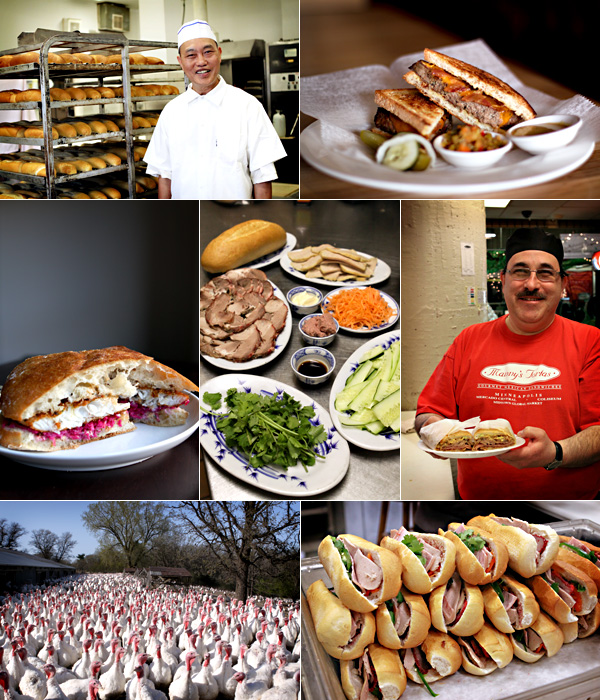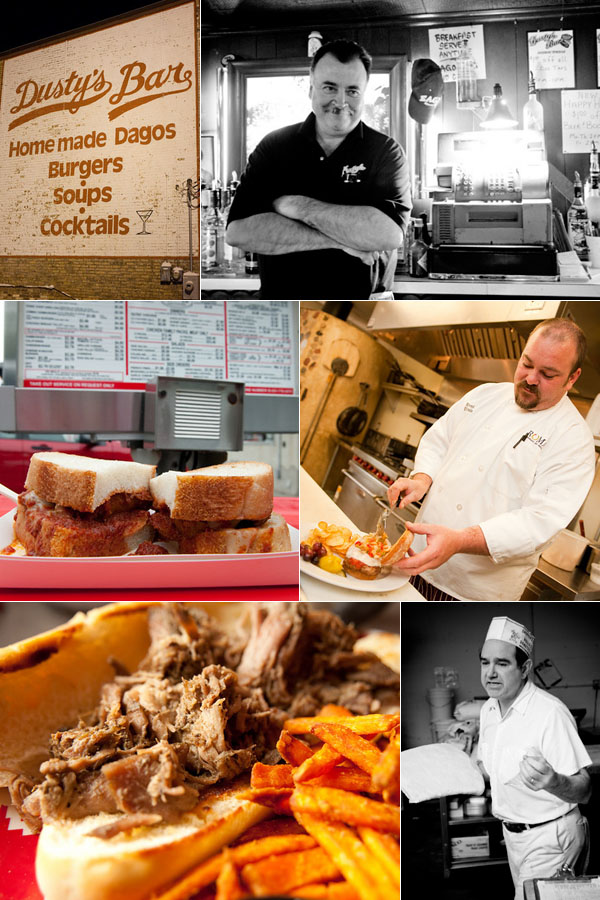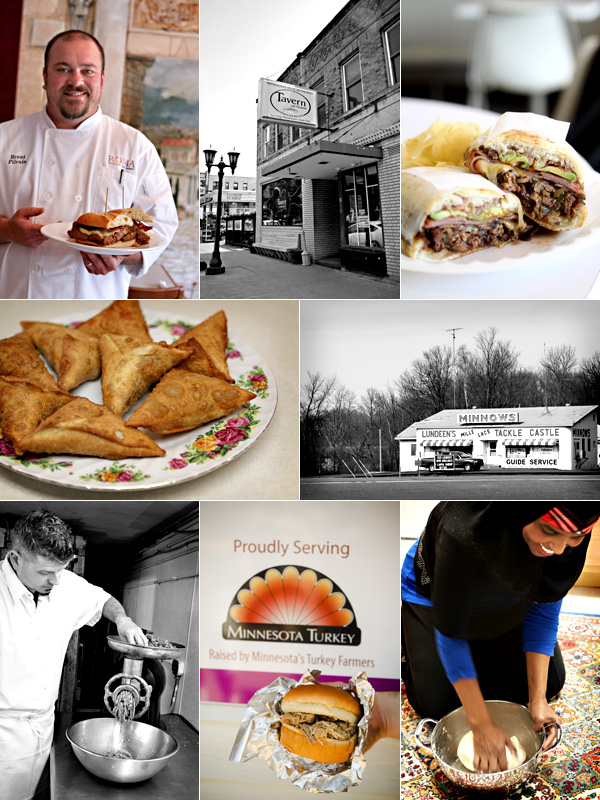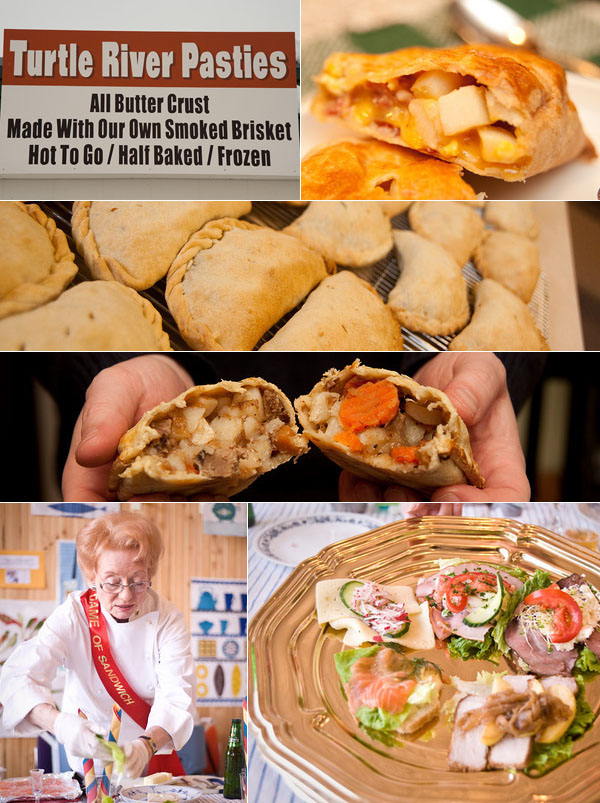
Growing up with two sets of Iron Range grandparents, I couldn’t escape eating pasties. My parents would always buy a box, stick them in the deep freezer, and pull them out on nights when dinner prep time ran short. My brothers and I would slather them in ketchup, pick at them, and wonder why we were being subjected to these dry, lifeless, crust pockets. What I didn’t realize then was that pasties were formulated for Cornish miners, not petulant suburban pre-teens, and that I was actually consuming a part of my heritage.
Similar revelations abound in the pages of Minnesota Lunch: From Pasties to Banh Mi, a new volume of culinary and historical exploration. The book was published by Minnesota Historical Society Press and created by six of my talented cohorts at The Heavy Table: writers Jill Lewis, Lori Writer, James Norton, and Susan Pagani, and photographers Katie Cannon and Becca Dilley. From the seemingly inconsequential angle of everyday lunch fare, they’ve tracked down the winding roads of Minnesota’s changing food culture and come back with more than just a diverse snapshot of our noon-time meals.

“There are a number of localities in the state that get their day-to-day food from a kind of sandwich,” says Norton. “They’re inexpensive, you can carry them around, and you can enjoy them at work. In a way, they symbolize where you’re from.” These are foods whose ever presence seems to have excused a lack of a clear history, just as they suggest the potential to be around long into the future. “The challenge of getting people to talk about folk food, and to research something that’s largely undocumented, was an appealing aspect of the book for us,” he says. “It’s a chance to write about something underexplored and under celebrated.”
It’s the unspoken weight these sandwiches carry that’s at the heart of Minnesota Lunch. The sandwiches are framed as repositories of cultural identity, whether immigrated (bánh mì, tortas) or homegrown (walleye sandwiches and the Jucy Lucy). Their raison d’êtres range from durability on the job-site (pasties), to economy (porketta), to easy eating after religious fasting (sambusas). They are all familiar, yet after finishing the book, I was surprised how little about them I actually knew.
The authors reached similar epiphanies. “Somali culture is so present in MN today, yet I had never ventured out to try any Somali food or to learn about the culture,” says Cannon of the Sambusa chapter. “I knew that if someone like me (who seeks food adventures) hadn’t experienced it, that there would be an overwhelmingly large population out there that would really learn something from this.”

“I didn’t grow up eating pasties all the time,” says Dilley. “But for people that have always made pasties in the basement of their church, it’s weird to talk about it as though it’s interesting. To them it’s not.” That’s key to the book’s success — the authors draw rich stories out of these lowly sandwiches. And if you’ve lived and eaten in Minnesota for a while, one of the chapters will likely strike you as personal. For me, it was the heartbreaking parallel between the ever-dwindling population of the Iron Range and its vociferous defense of the pasty’s compositional integrity — seemingly a lunch-time embodiment of its resistance to change.
(The book does feature Mark Schultz of Turtle River Pasties, who is working to shake the dusty confines of the pasty with a brisket filling and a flakier butter crust. And I’m sure there are Rangers who would disagree with my characterization of their attitudes and can provide evidence to the contrary. I suppose we should hash out our differences over lunch. Preferably, one of porketta.)
Minnesota Lunch reads more like a cultural history than a cookbook. But since it’s impossible to read about these sandwiches without getting furiously hungry, each chapter is supplemented with recipes. Some of them, particularly the bánh mì and Zahra Dirir’s sambusas, seem to exist only for the marvel of seeing how complicated these ‘simple’ lunches actually are. The rest are within reach of us culinary mortals, and will either make it into your lunchtime rotation, or perhaps give you a new technique or accompaniment for one of your favorites. (You must make the pickled cabbage and Cajun Mayo from Blackbird Café for your next walleye sandwich).

During their travels, the authors disturbed ice fishermen, braved turkey farms in their third-trimester, got mistaken for DNR officials and chased by Rottweilers. Their sincerity for the subject matter is evident, but they weren’t alone. Regular Heavy Table readers will enjoy the contributions from the familiar set of Minnesota chefs, purveyors, and restaurateurs whose opinions and recipes make the book a definitive resource.
Minnesota Lunch tells eleven stories of a group and their sandwich – and how those foods collided, changed, got co-opted, and ended up on your plate. The delineation of “Dago” from ethnic slur to Sausage sandwich, James J. Hill’s obsession with cattle breading, and Garrison Keillor keeping a lake-side tradition alive are just a few of the satisfying bites therein. “As a foodie,” says Cannon, “[Minnesota Lunch] totally satisfied my intellectual hunger while leaving me actually hungry.” This is a point not to be taken lightly; so grab a copy, and a sandwich, and dig in.


Comments are closed.